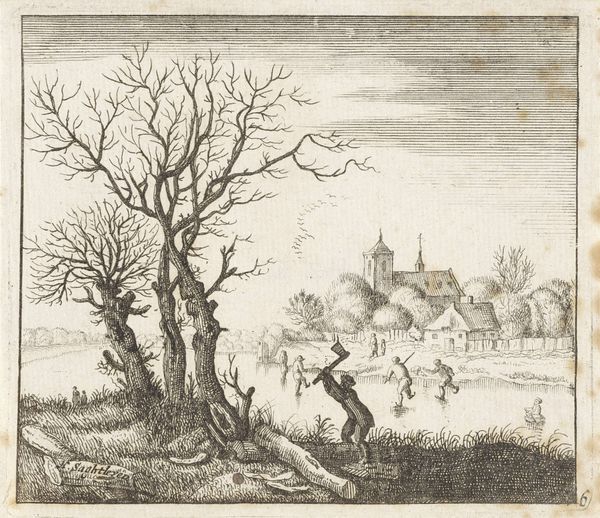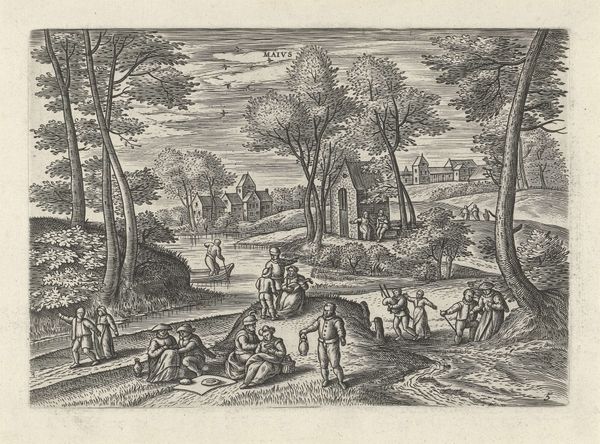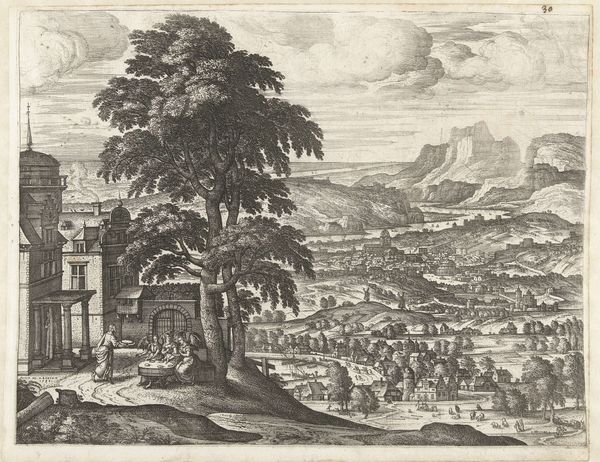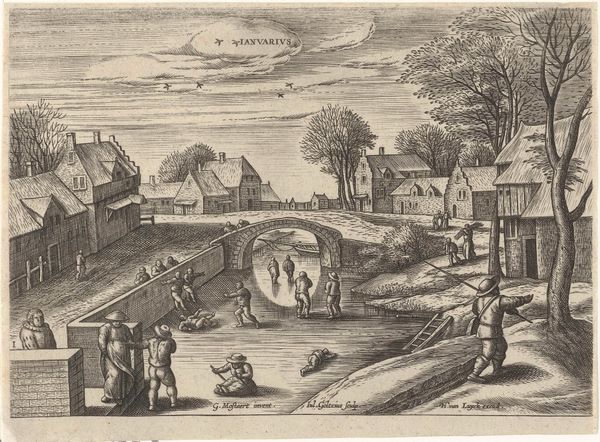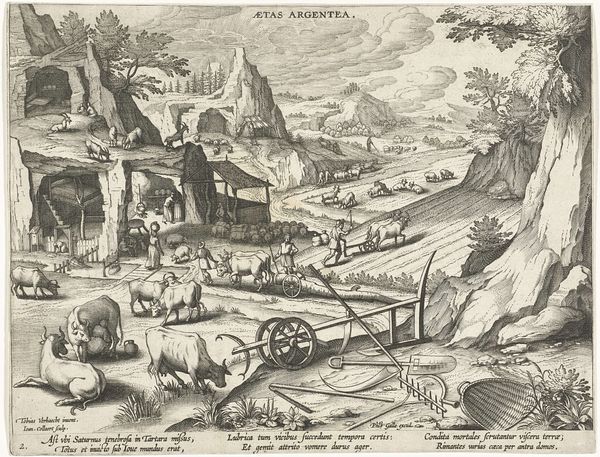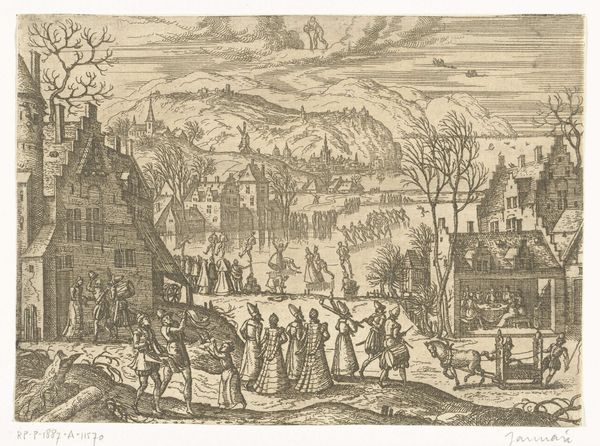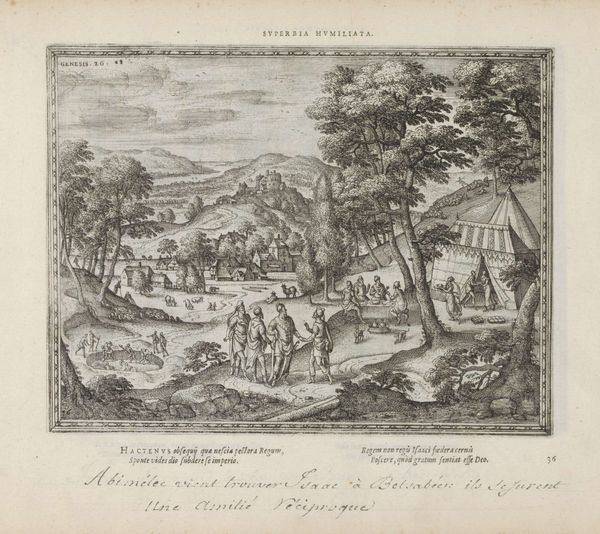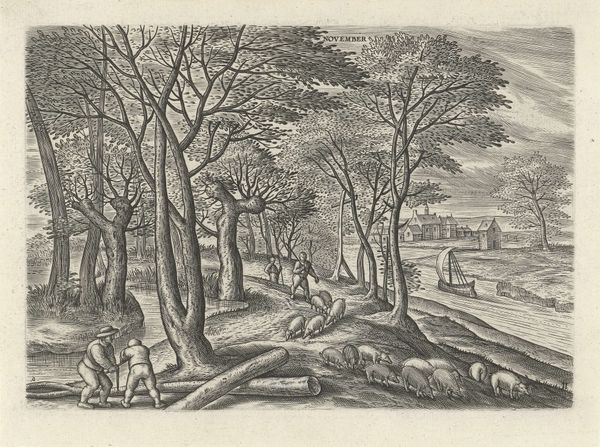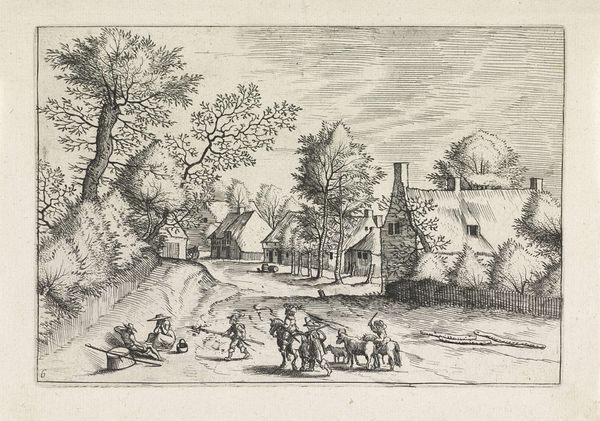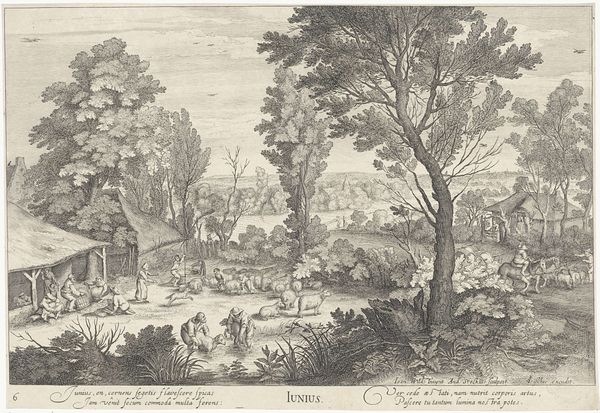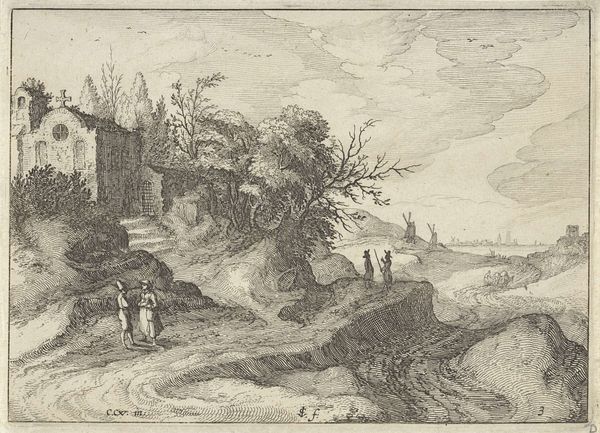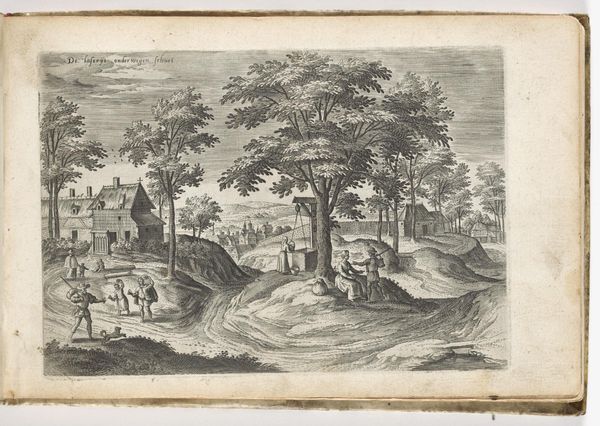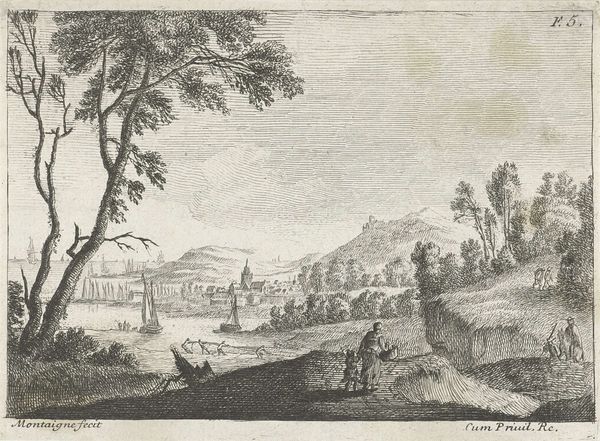
drawing, print, engraving
#
drawing
# print
#
landscape
#
figuration
#
line
#
genre-painting
#
northern-renaissance
#
engraving
#
realism
Dimensions: height 286 mm, width 432 mm
Copyright: Rijks Museum: Open Domain
Curator: What a bleak, yet fascinating, depiction of rural life. This is "December," an engraving from 1614 by Jacob Matham, currently residing in the Rijksmuseum. Editor: It strikes me immediately as incredibly labor-intensive, the visible labor and effort are impressive. All of that detail meticulously etched into the plate! You can almost feel the biting winter air just looking at it. Curator: Matham's choice of subject matter does provide an interesting snapshot of seasonal labor, certainly. The foreground shows villagers butchering pigs—a vital activity in December for food preservation. The prominence of this specific labor highlights the practical realities of survival during the colder months in that region. Editor: Absolutely, and consider the social dynamics! We see a communal act, perhaps the sharing of resources and labour. The whole community clearly is dependant on using the animals' products in a careful and meticulous way. Are these domestic workers employed? Or is this more of a small landowner system? The composition, with the village receding into the background, speaks volumes about the interconnectedness of rural society and the economy surrounding the community and livestock production. Curator: Yes, the spatial organization effectively communicates social structure. But beyond the specific social realities, Matham utilizes traditional Northern Renaissance artistic conventions, especially in the linear style and detailed rendering. The print likely served multiple purposes: as an artwork, a calendar illustration perhaps, and even as a document reflecting rural life at the time, circulated to wealthy individuals in urban areas who are far from that form of living. Editor: True, the layers of meaning are intriguing. It speaks volumes about the complex socio-political landscape in 17th-century Europe. Were these artworks used for social commentary or merely recording a particular image of life for consumption by city residents and wealthier people. Curator: Food for thought indeed, given art's place in reflecting and influencing societal narratives. Editor: This examination of “December” certainly reveals art not just as image-making but as part of complex production systems and a recorder of cultural consumption.
Comments
No comments
Be the first to comment and join the conversation on the ultimate creative platform.
